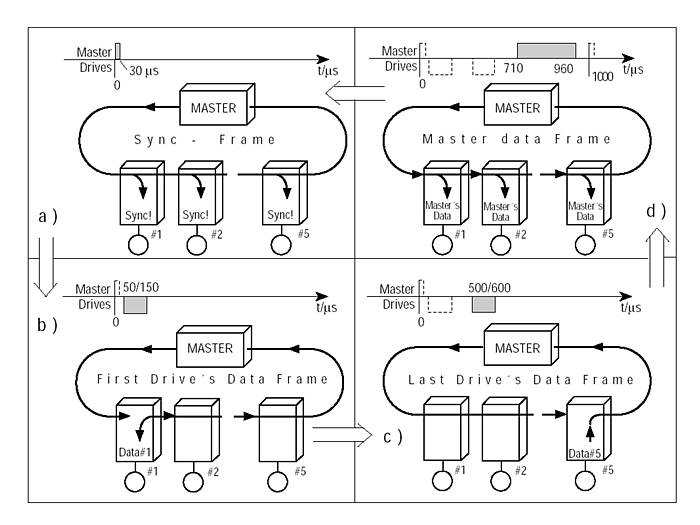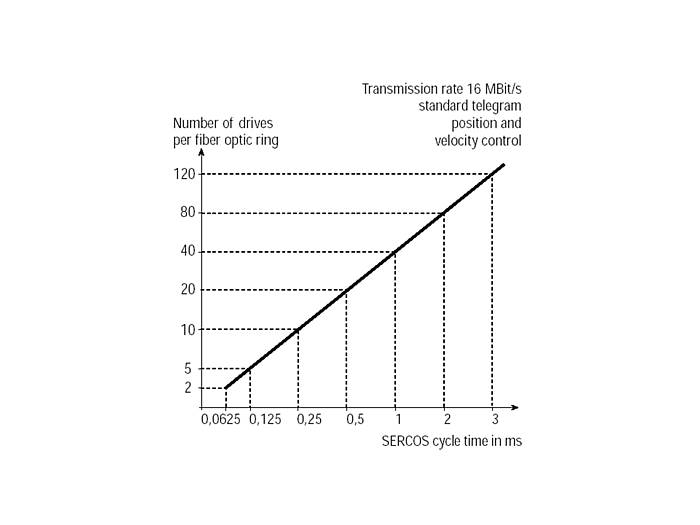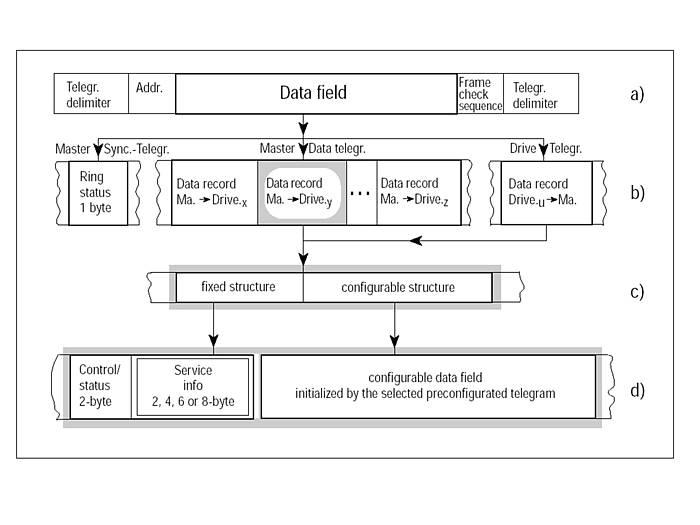Communication method, synchronization and protocol structure
In operation, Sercos communication takes place cyclically as master/slave communication at the cycle time selected at initialization. This can be 62 µs, 125 µs, 250 µs or any whole multiple of 250 µs up to 65 ms. The cycle times are specified in order to obtain the necessary synchronization with fixed working cycle times in the controller and the drives. The controller is always the communication master in a Sercos ring. Communication takes place via three different types of messages: The master sync message (MST) is received simultaneously by all drives and is used to synchronize all time-related actions in the NC and drives. Like the master sync message, the master data message (MDT) is also received simultaneously by all drives. It contains the cyclical data and the service data for all drives on the ring. The drives send their messages (AT) in succession in allotted time slots.
 |
The synchronization between the between the cyclic controller and the equally cyclic digital drives has a microsecond accuracy. The precise coordination of all connected drives is guaranteed because the actual values are measured at exactly the same time in all digital drives and all command values become effective simultaneously. The synchronization accuracy of below 1 microsecond is independent of the number of digital drives, the selected transmission speed and the configured cycle time. At a speed of 60 m/min., a dimensional accuracy of 1 micrometer corresponds to a time accuracy of 1 microsecond.
The first generation of Sercos supports transmission rates of 2 and 4 Mbit/s, whereas Sercos II supports transmission rates of 2, 4, 8 and 16 Mbit/s. The number of drives that can be serviced per ring depends on the communication cycle time, the operation mode and the communications speed. The number of drives per controller can be extended as required by using several fiber optic rings.
 |
The configurability of the real-time data allows any other operating modes to be used independently. Service data is exchanged only at the request of the master. Service data is transmitted with a handshaking procedure in 2, 4, 6 or 8-byte portions in the service info field and then reassembled at the receiver. NRZI-coded HDLC protocols are used for communication. In each communication cycle, the real-time data is transmitted in the so-called configurable data field. At initialization, the identification number system specifies which real-time data is transmitted. Apart from numerical data such as command values and actual values, these can also be bit lists with I/O instructions. Priority messages with specific real-time data have been specified for the three basic operating modes - torque control, velocity control and position control - as well as combined velocity/position control.
 |